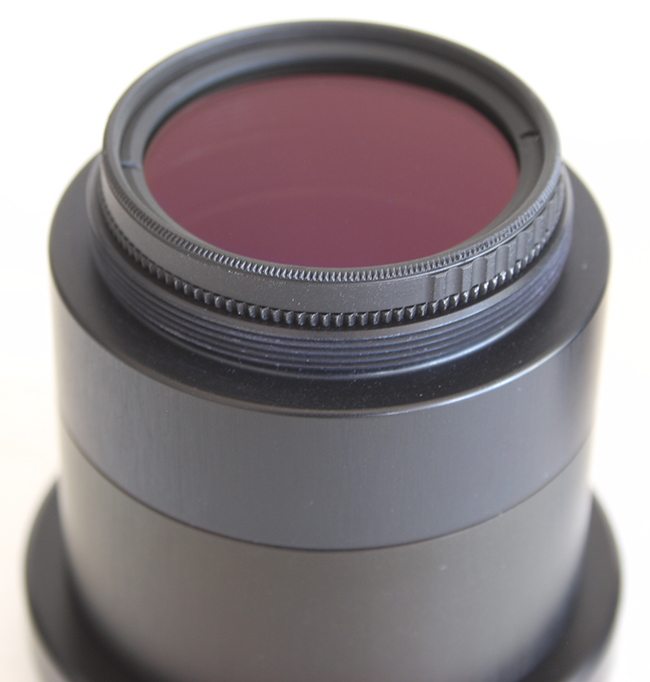

Add modern digital cameras to older Zeiss (Standard or Phomi) microscopes using LM microscope adapters
Modern mirrorless system cameras or digital SLR cameras are equipped with large, high-grade sensors. Their state-of-the-art camera technology, combined with a suitable software solution, makes them a great choice for photomicrography. These cameras also offer a strong price-performance ratio – from inexpensive entry-level cameras to professional-grade models – and are a great option for obtaining excellent photomicrographs with older Zeiss microscopes with finite optics. Controlling such high-resolution cameras remotely from a PC/Mac makes it even easier to optimise the settings so as to get the best possible image quality out of both camera and microscope.

Zeiss launched its “Standard” series of microscopes in 1950, followed by the “Photomicroscope” (“Phomi”) series in 1955. The “Standard” microscope became one of the most successful models in the history of Carl Zeiss. This model series, which was particularly well-known in the 1960s and 1970s, also introduced Koehler illumination, condensers with a foldable front lens, coaxial drives and many other new developments.

The finite optics incorporated in these older microscopes can make it difficult to combine them with modern cameras for photomicrography applications. Luckily, with our LM direct adapter system we can offer the perfect solution to this challenge. This adapter system features a highly compact design and delivers excellent image quality. It is attached directly to the phototube of the microscope.
The microscopes have a phototube with an internal diameter of 46 mm. Using a basic calliper is a quick and easy way to check these diameter measurements.

Our LM adapter with plan achromatic precision optics is attached directly to this basic phototube.

We generally recommend modern mirrorless system cameras, SLR cameras or microscope cameras with large sensors for microscopy applications, but we also offer adapter solutions for C-mount cameras.

With our adapters, full-frame sensor cameras can capture 100% of the possible field of view without any vignetting (peripheral darkening). The smaller APS-C sensor format only uses about 70% of the field of view.
The LM adapter solution has a large lens diameter and therefore offers high light gathering power.

The Zeiss Standard and Phomi microscopes were also available with an optional phototube with an internal diameter of 23.2 mm – one of the most common tube dimensions. We are able to provide an excellent adapter solution for this dimension as well.
For added image quality and flexibility, our adapter solution can be equipped with a filter holder (M37 thread), which allows integration of optical filters (e.g. circular polarising filters, UV filters, IR filters, grey filters, etc.) into the assembly. This means that even microscopes of this age can be used for special applications.

Shown in the image: LM microscope adapter with circular polarising filter

As an alternative to this special solution, we also offer our “regular” LM digital adapter for connection to the eyepiece tube (23.2 mm internal diameter). This adapter solution offers great flexibility, because it can be used on almost any microscope.
Conclusion: With our LM microscope adapters, even old microscope classics from the 1960s or 1970s can be paired with modern cameras, either via the phototube or in place of an eyepiece. If you don’t have a camera yet, we will be happy to provide you with advice and support. For more information on this subject, please see the following info page.
12.07.2022Photography:
Fitting the microscope to digital single-lens reflex (DSLR), mirrorless interchangeable-lens cameras (MILC ), digital single-lens mirrorless (DSLM) or C-mount cameras is easy with our LM digital SLR adapters, which feature a plan achromatic optical system. Our products make it possible to capture top-quality microscope images. To help you select the adapter that is right for your camera, we have set up an online configurator on our website. You can also email us – ideally with attached photographs of your microscope.
Modern DSLR and single-lens mirrorless (DSLM) offer the latest technology and are generally very well suited for microscopy applications. Most of them can be controlled remotely via PC/Mac. Because of their high sales volumes, they offer an excellent price/performance ratio compared to special-purpose microscope cameras.
Features of top DSLR and single-lens mirrorless cameras (DSLM):
- Large, powerful full-frame sensors (36 x 24 mm)
- Sensor resolution of 61 megapixels or 240 megapixels with Pixel Shift technology
- High light sensitivity (ISO 400,000+)
- Extensive dynamic range (up to 15 aperture stops/f-stops)
- Short exposure times (1/8000 second) up to 1/32,000 seconds using the digital shutter
- 4K Ultra HD or 8K Ultra HD video function
- Live video capture on external monitors in ultra HD quality
In most cases, these cameras are significantly more powerful than microscope cameras with smaller sensors (1/2" or 2/3"). On our website you will find our current camera recommendations and a camera ranking which is specifically tailored to microscopy applications.
